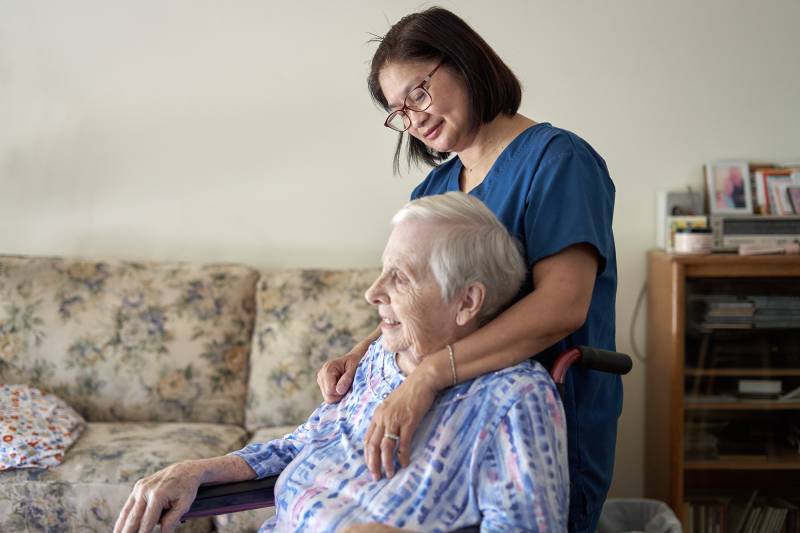That’s important not just for in-home workers, advocates say, but for California’s Baby Boomers, who will need to hire them.
California’s caregiver workforce is already too small, experts say, and many are aging immigrants like Diaz, earning near-minimum wages. A few state lawmakers have introduced bills to protect workers and encourage growth in the workforce.
“The need for care is going to more than double in the next 12 years here in California, and it’s happening across the country,” said Arnulfo De La Cruz, president of the Service Employees International Union (SEIU) Local 2015, which represents long-term care workers throughout California. “We’re a country that’s aging, and how do we want to care for people when they age?”
California caregivers undervalued, underpaid
By 2030, nearly 1 in 5 Californians will be age 65 or older, according to the nonprofit Public Policy Institute of California. The state will be facing a shortage of as many as 3.2 million care workers by then, said Susan DeMarois, director of the California Department of Aging.
Caregiving has been an undervalued field, largely because its workers are predominantly immigrant women, said Fernando Torres-Gil, director of the UCLA Center for Policy Research on Aging.
“We don’t, as a society, value or honor persons that do caregiving,” Torres-Gil said.
In California 80% of care workers are women, 74% are people of color and 47% are immigrants, according to PHI, a New York-based research and elder policy nonprofit.
Caregivers who work in homes or nursing centers often earn minimum, or close to minimum, wages, Torres-Gil said, and they lack benefits and safety protections typical of 9-to-5 jobs.
That makes careers in long-term care a hard sell for young people, he said.
The solution is two-pronged, said Aquilina Soriano Versoza, executive director of the Pilipino Workers Center of Southern California. Long-term care workers should receive living wages and benefits good enough to attract and retain them, she said, and government systems should help Californians pay for the care they’ll need as they age.
“It’s a shortage of good jobs,” she said of caregiving. “People are not going into care work, even though it’s one of the fastest growing jobs, because of the conditions and what it’s paid.”
Caregivers’ pay
The state and counties help set that pay. The state’s In-Home Supportive Services Program serves 700,000 Californians, paying for in-home care for low-income residents age 65 and older and others who are disabled.
It’s funded with a mix of government money. A state audit in 2020 showed California contributing $4.5 billion, counties $1.6 billion and the federal government $7.2 billion.
The in-home program pays caregivers, who help people stay in their homes. Caregivers’ pay rates are negotiated by the counties where they work and the unions that represent them.
Workers often complain about slow negotiations stymied by regional politics.
In Kern County, for instance, six years of bargaining for a new contract yielded a recent county offer of 50 cents an hour more on the $15.50 base pay. Sandy Moreno, who left a career in labor to care for her grandmother, said showing up at county supervisors’ meetings didn’t change things.
“It just feels like they don’t really care about IHSS providers,” she said. “No matter how many times we go to their sessions to talk about our work, to let them know we need to invest in this program, it just feels like we’re at the end of their list.”
The Fresno County Public Authority and SEIU Local 2015 also are in active negotiations for caregiver contracts. Sal Quintero, the only Latino Fresno County supervisor, said he supports organized labor and caregivers — his brother was a caregiver — but “we have to be careful with our county budget and see what’s affordable for us as well.”
Statewide bargaining?
A few state lawmakers introduced bills designed to improve pay and working conditions for caregivers.


